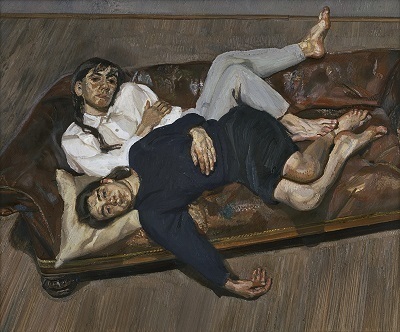Overview
Lucian Freud was born in Berlin to Ernst, the architect son of psychoanalyst Sigmund Freud and his wife Lucie Brasch. In 1933, age ten, Freud fled with his family to England, ahead of the rise of Nazism. The family settled in London where Freud lived for the rest of his life.
Freud studied at the Central School of Arts and Crafts, London and Cedric Morris’s East Anglian School of Painting and Drawing in Dedham. His first solo exhibition, at the Lefevre Gallery received critical acclaim in 1944, followed by a number of hallucinatory, finely-painted portraits that marked him as an artist to watch. Freud’s adherence to realism and focus on the human figure, when abstraction and other progressive forms of practice were more prolific, moved him in and out of the spotlight until the 1980’s when renewed international interest in painting and figuration gave his work a new significance. Since then Freud has become one of the best-known and most highly-regarded British artists of the 20th century. He was awarded the Companion of Honour and the Order of Merit. Major retrospectives of his work were held in Tate Britain, 2002, IMMA 2007, MOMA, 2008 and the National Portrait Gallery, London in 2012.
Freud visited Dublin and Connemara in Ireland in the late 1940s, partly on a pilgrimage to Jack B.Yeats whom he considered the greatest living painter and later when married to Caroline Blackwood of the Guinness family. From the 1950s he connected with Irish artists such as Patrick Swift whose Dublin studio he used and Edward McGuire whose tutor he was at the Slade Art School, as well as the literary circle of Patrick Kavanagh, John Montague, Brendan Behan, Anthony Cronin and their Soho milieu. An in depth account of Freud and Ireland will be explored through the Freud Project, including his close links with the other great figurative painter of the 20th century, Irish-born and London-based, Francis Bacon – his friend, mentor and great rival of thirty years and whose studio you can visit in Dublin City Gallery the Hugh Lane.
